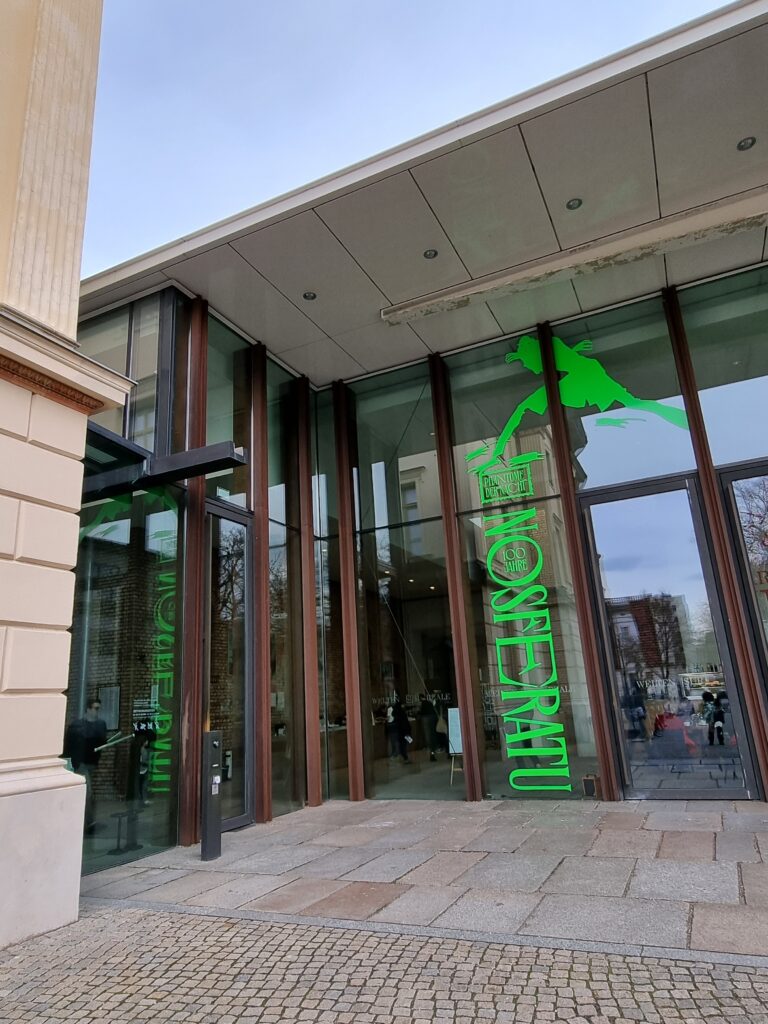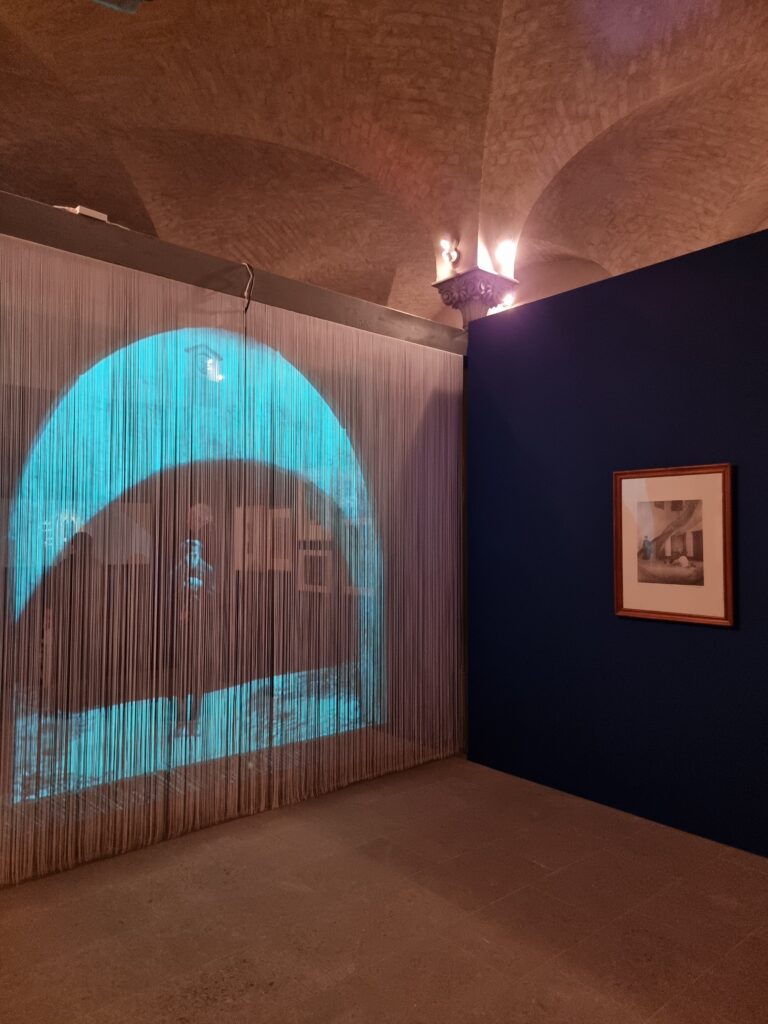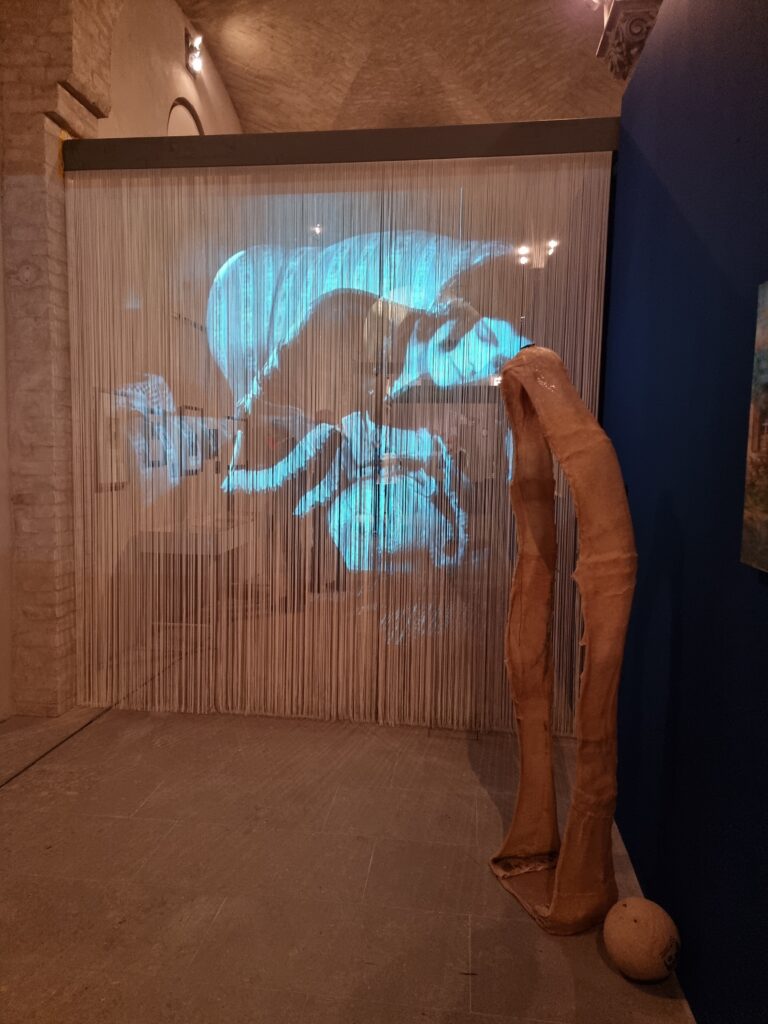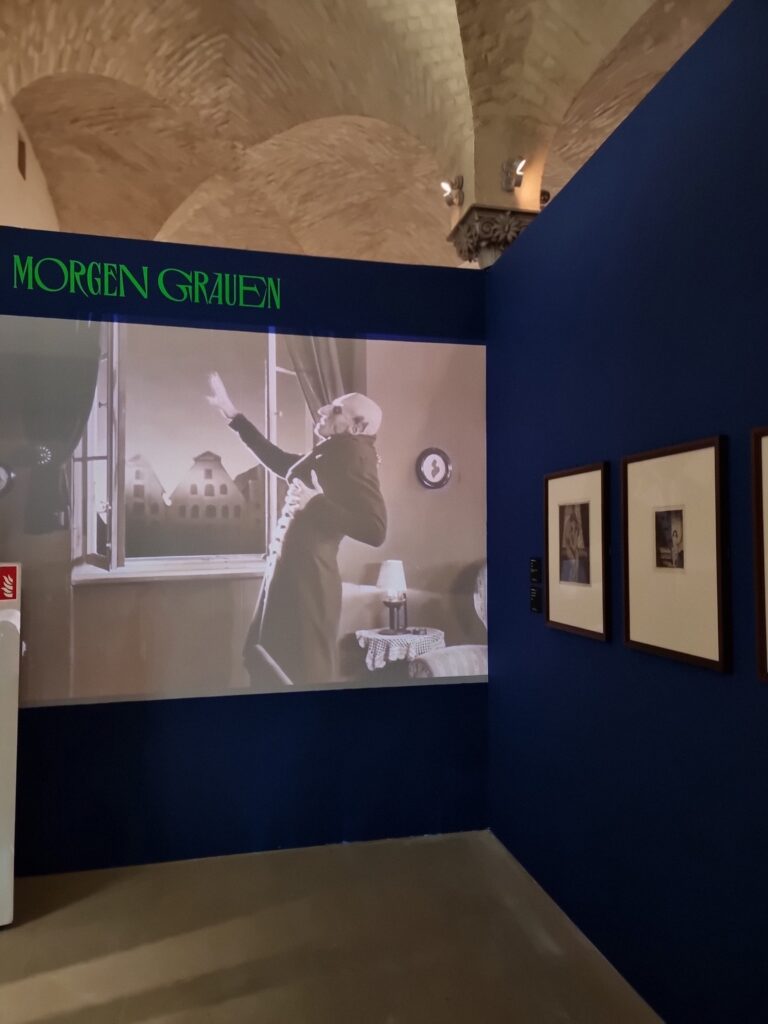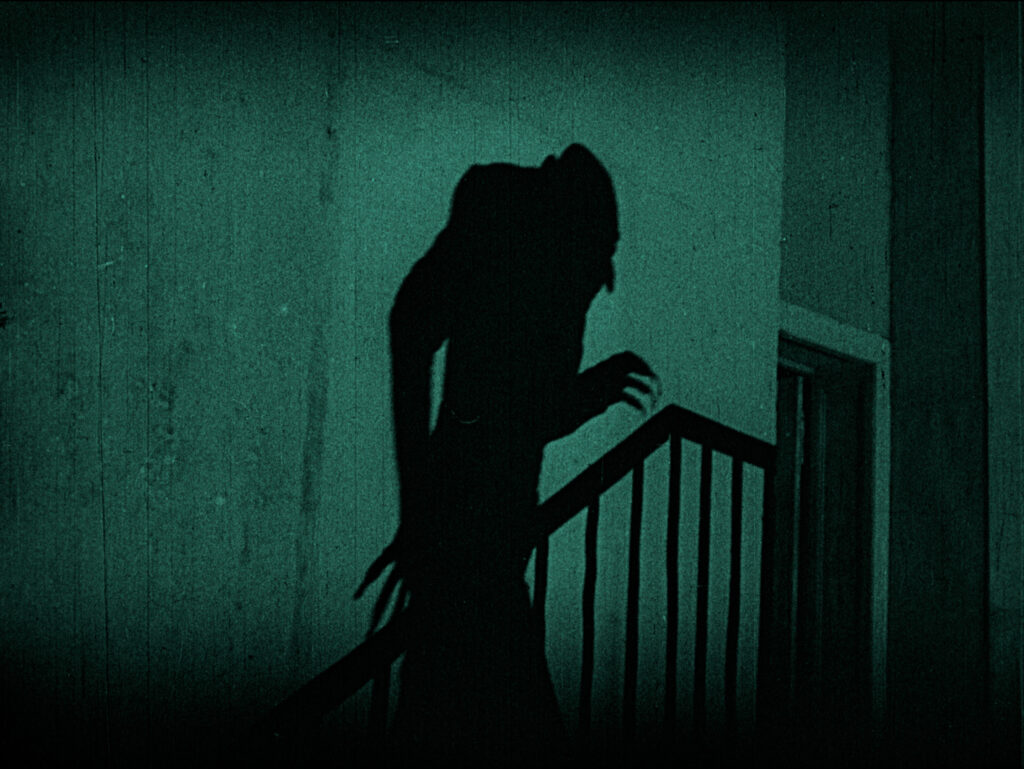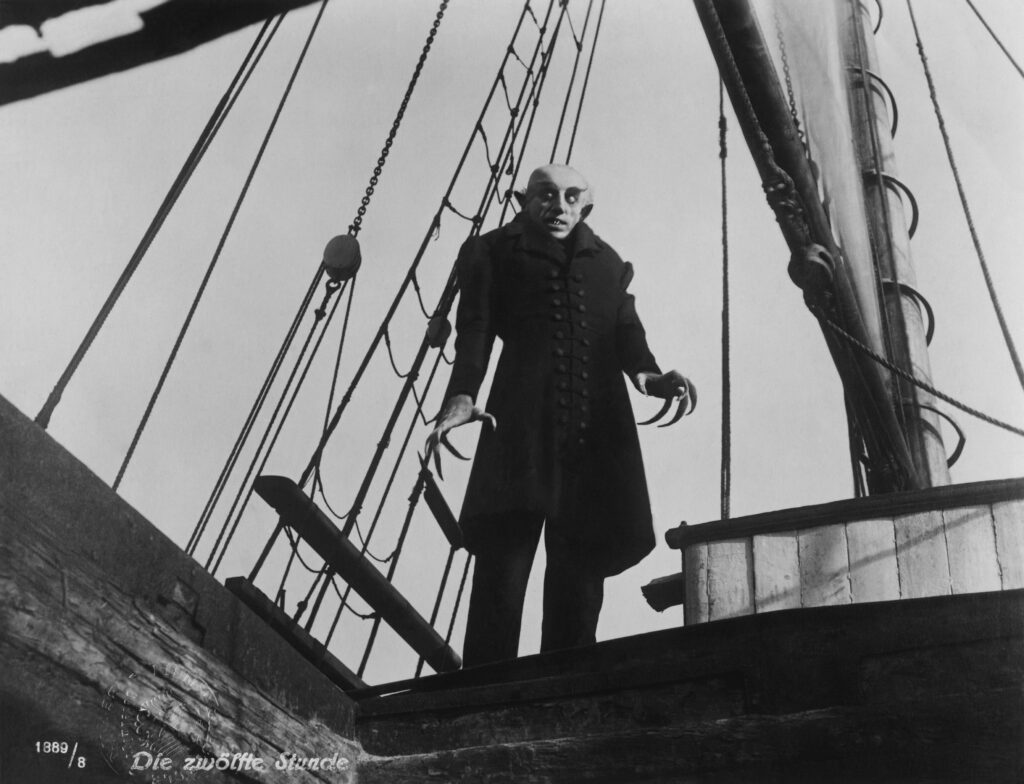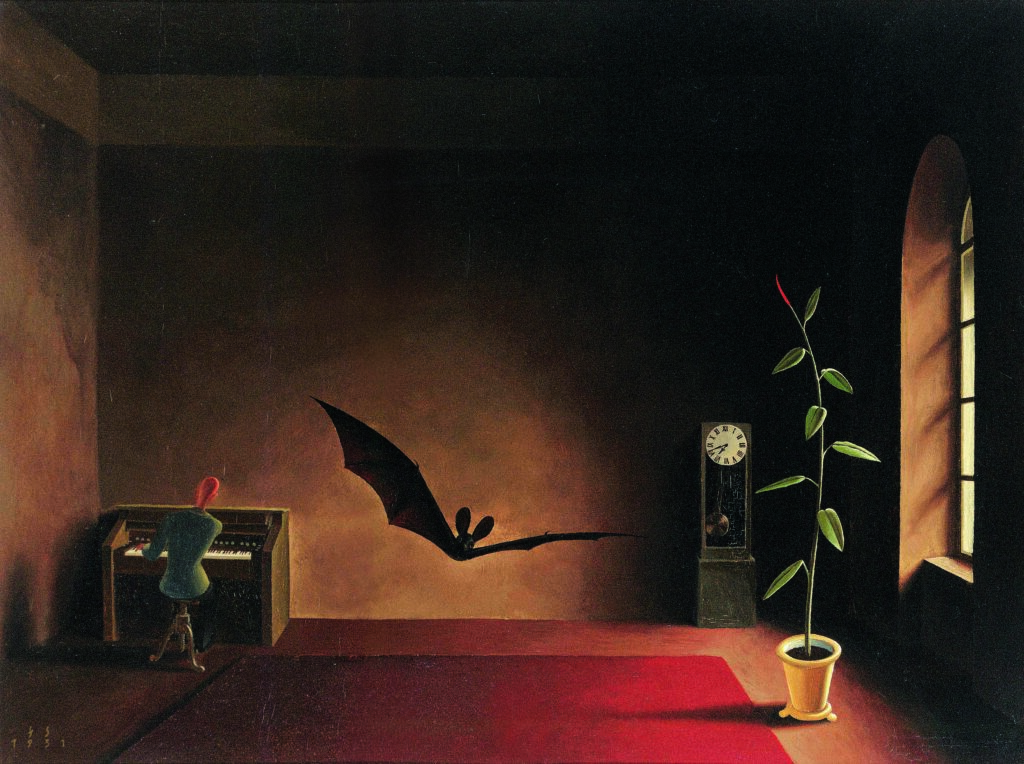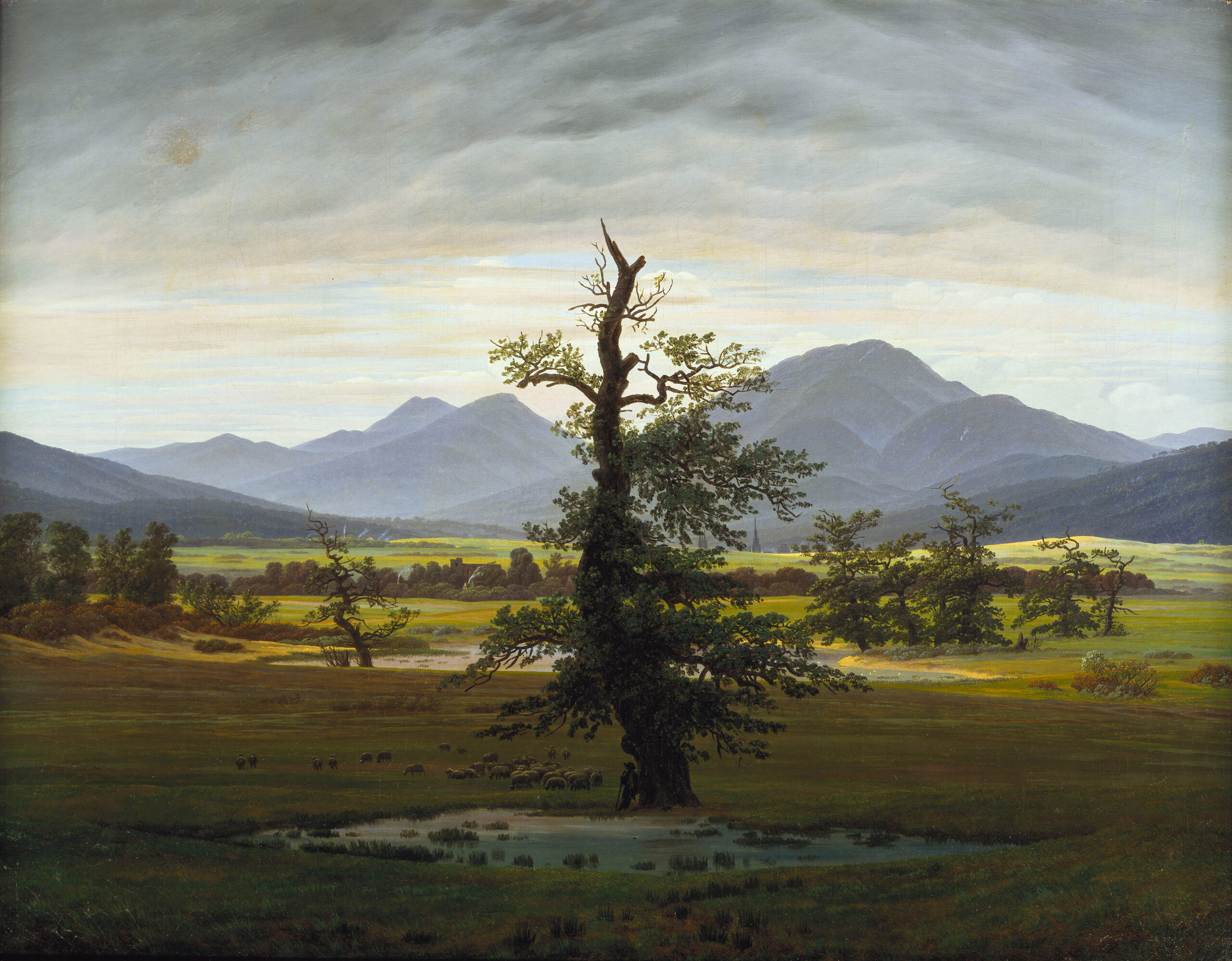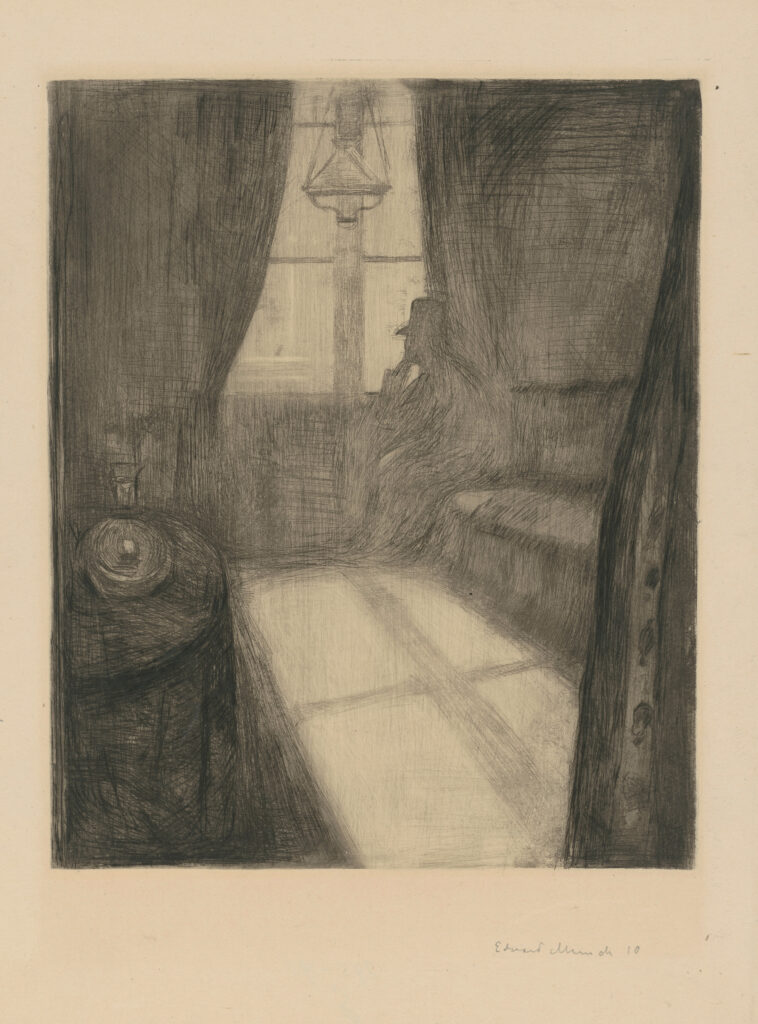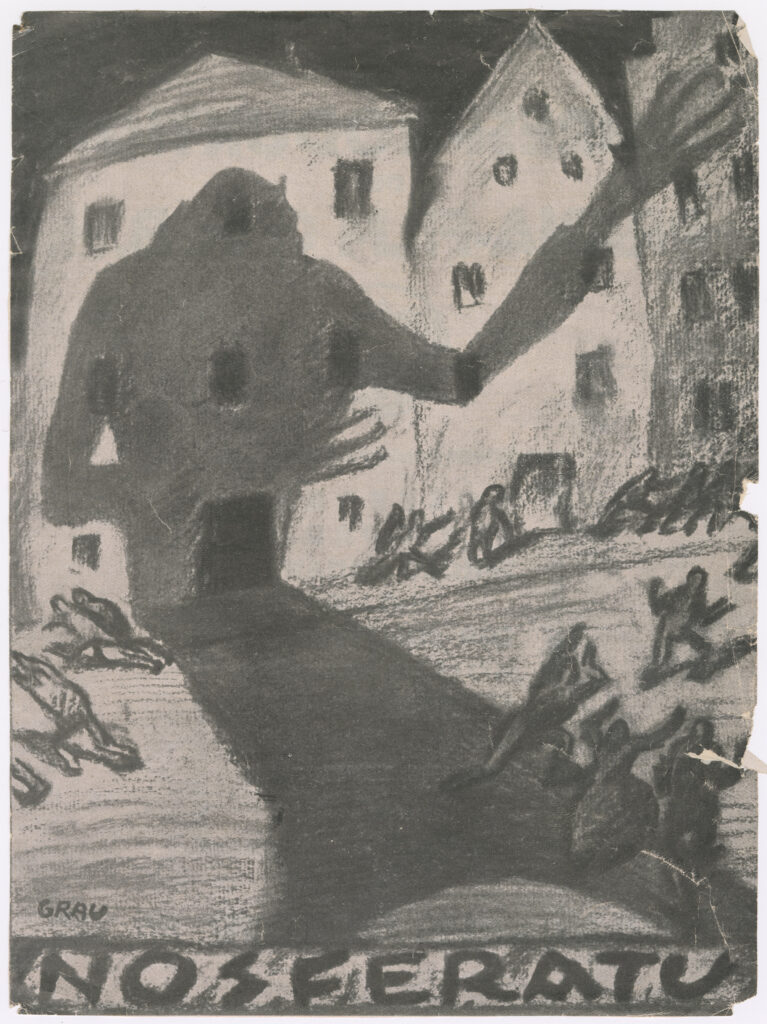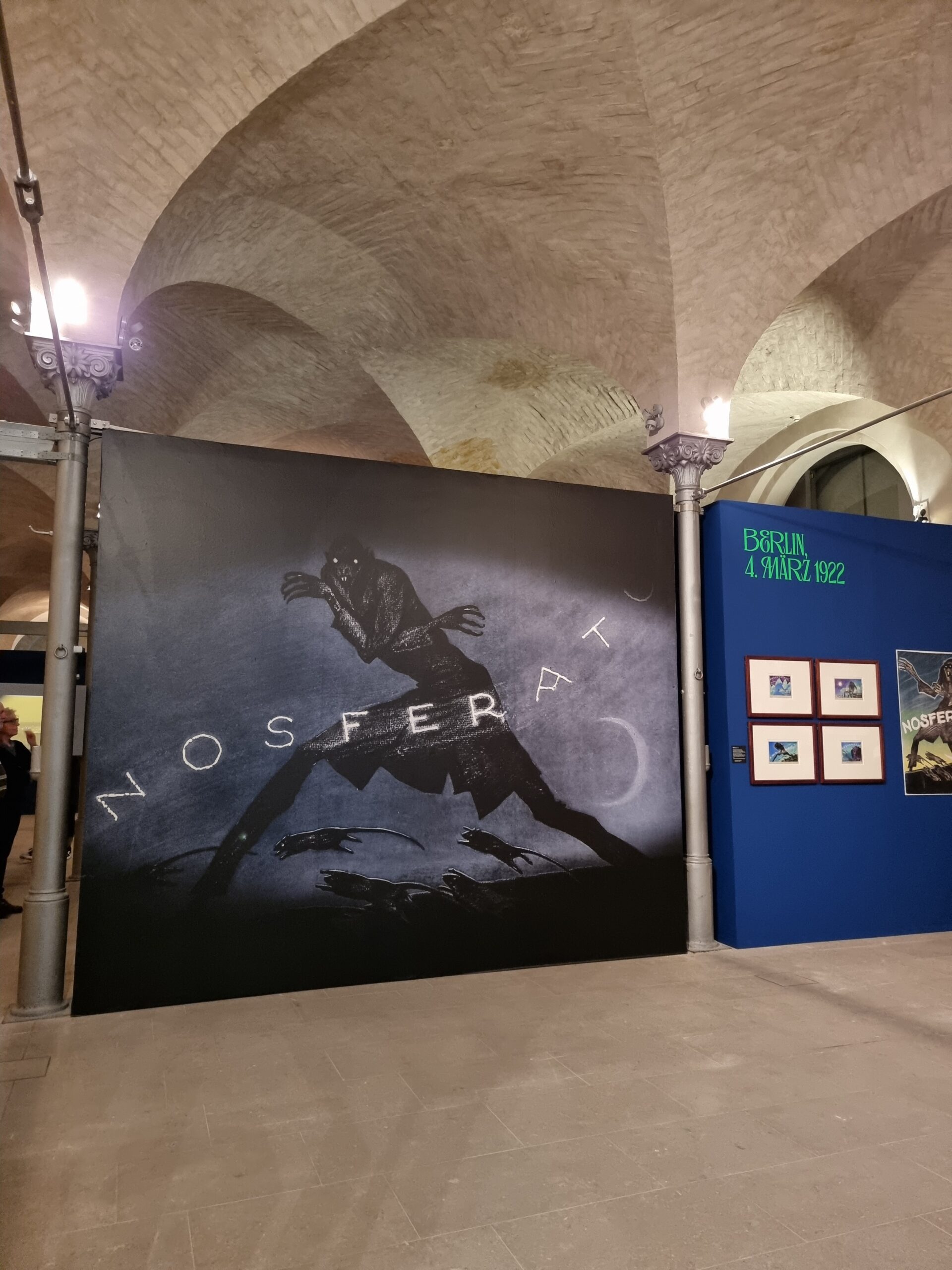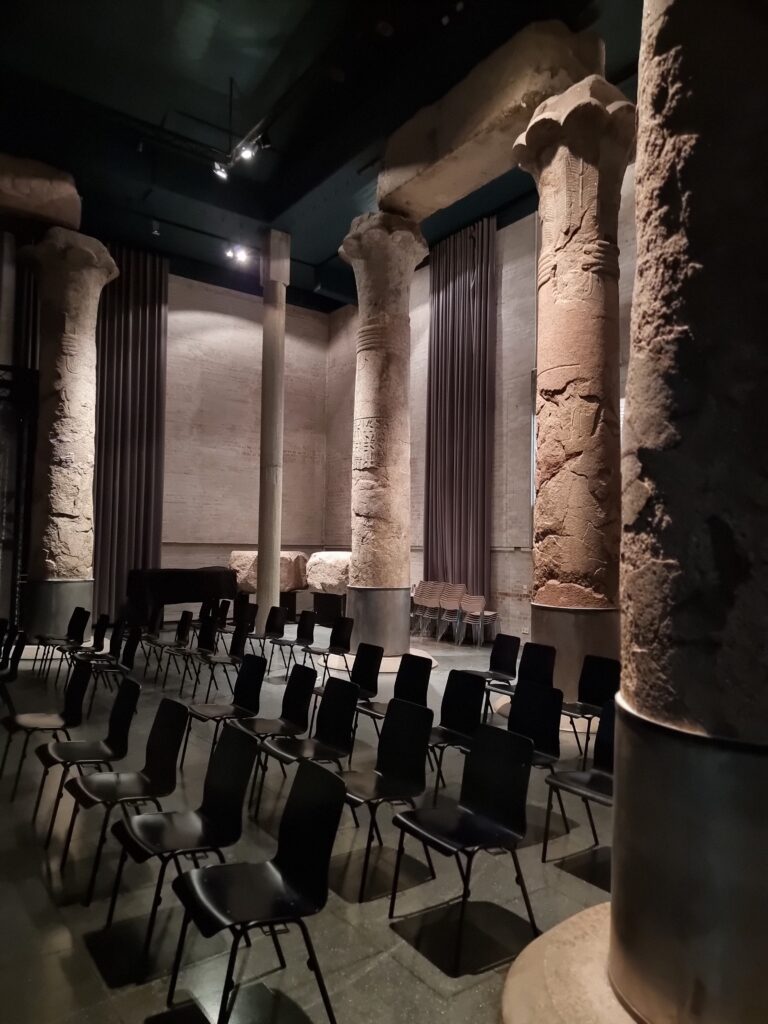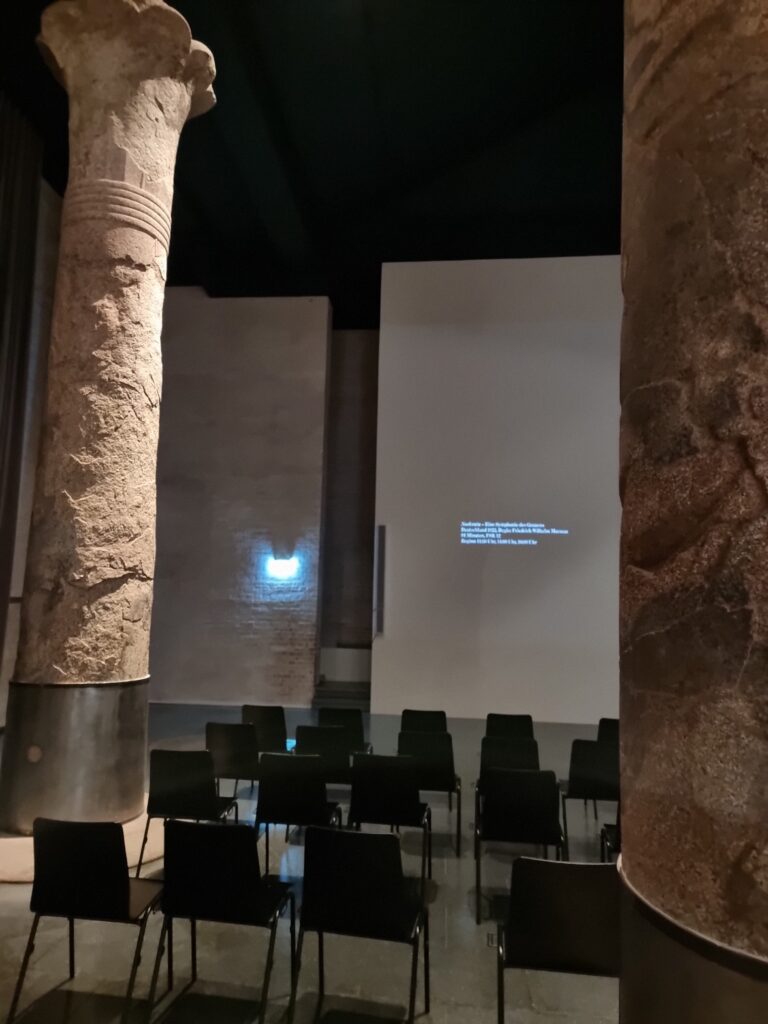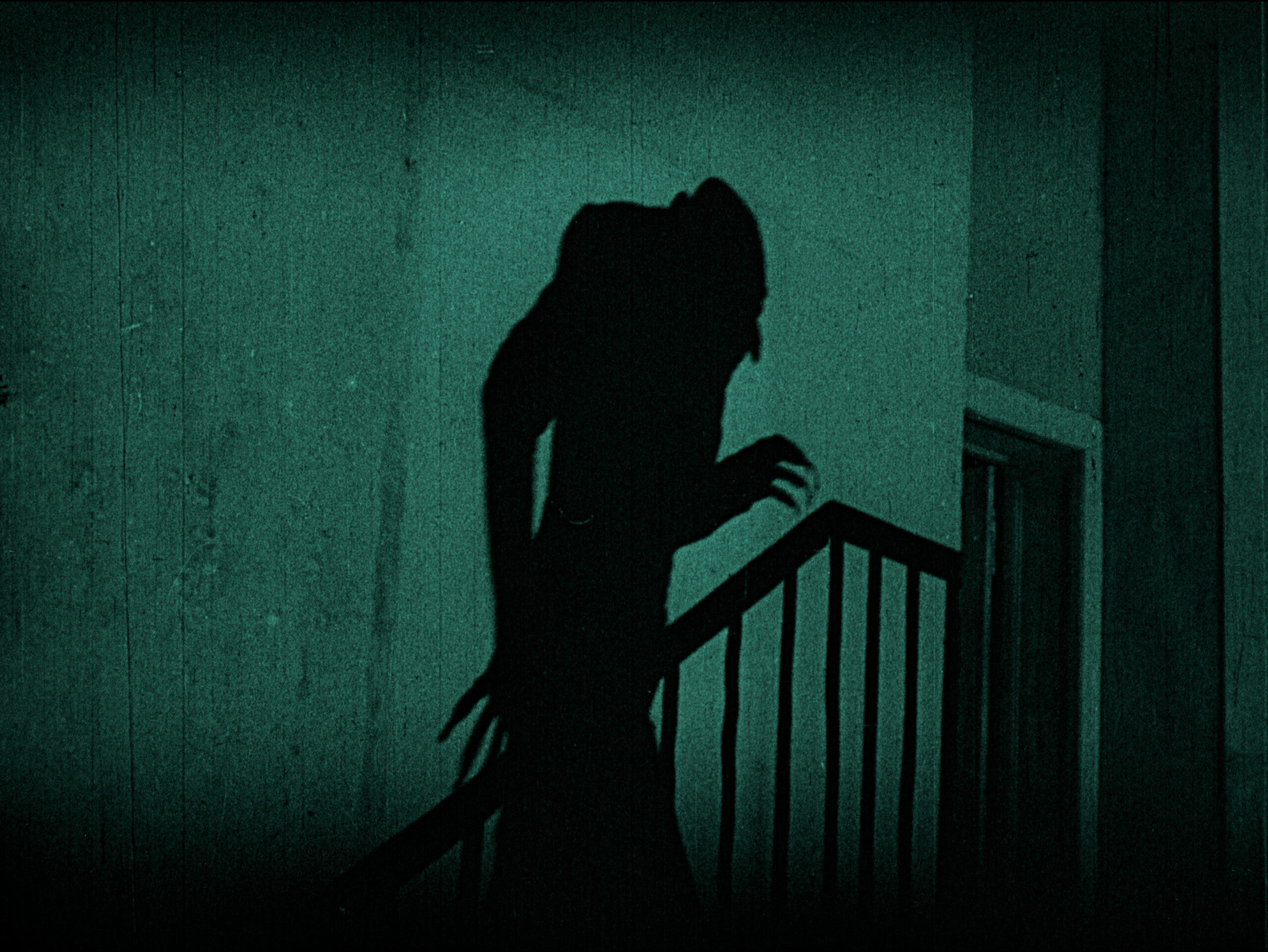
Phantoms of the Night – 100 Years of Nosferatu
cary with a silent classic film of horror - the Scharf Gerstenberg Collection and the dark worlds of the surreal.
In the Scharf Gerstenberg Collection, which conjures up “surreal worlds” with its permanent exhibition, “scary” is currently the order of the day, with a classic horror film and the special exhibition “Nosferatu”! Several times the material was filmed. In 1978 there was, among other things, a much acclaimed reinterpretation by Werner Herzog with Klaus Kinski, Isabelle Adjani and Bruno Ganz in the leading roles. The remake became a huge commercial success in the U.S. within a few weeks, quite different from F.W. Murnau’s 1922 original…the cult film, which still fascinates cineastes and art lovers alike, is getting its own exhibition 100 years after its release.
Through projections on a curtain made of threads, one can access the different parts of the exhibition. On the walls, in addition to film posters, invitations and film sequences, one finds above all the works of art that make the mutual influences between art and film clear, etchings by Francisco de Goya and Dali or the drypoint etchings by James Ensor.
Due to a lost copyright dispute the silent film classic should be destroyed. And the silent film classic would actually no longer exist, however, it survived because some film reels had previously made their way to France, into the hands of the Surrealists. It was saved in several cut versions as a result and is now considered the most influential film of the horror genre. The story of the vampire Count Orlok (Nosferatu), based on the novel “Dracula” fascinates not only cinematically. Its dreamlike sequences are considered fantastic art, especially by the followers of surrealism. André Breton, one of the founders of the surrealist movement, used film quotes in his writings and even declared Nosferatu his favorite film.
The film architect Albin Grau, also a commercial artist and painter, created a backdrop for the film that leads into an eerie, phantom-like and dark world (partly of the absurd). The background for the film sets was provided by classical paintings, such as the works of Caspar David Friedrich or artworks by Max Klinger and Edvard Munch, to which this exhibition also refers. “Phantoms of the Night – 100 Years of Nosferatu” shows backgrounds to the film as well as the works of art that served as inspiration.
The advertising campaign surrounding this film began months before the film’s release, which was quite unique at the time. When “Nosferatu” first appeared on the big screen in Berlin’s Marble Hall in 1922, an advertising budget had already been spent that exceeded the cost of the actual film shoot. The film company subsequently went bankrupt.
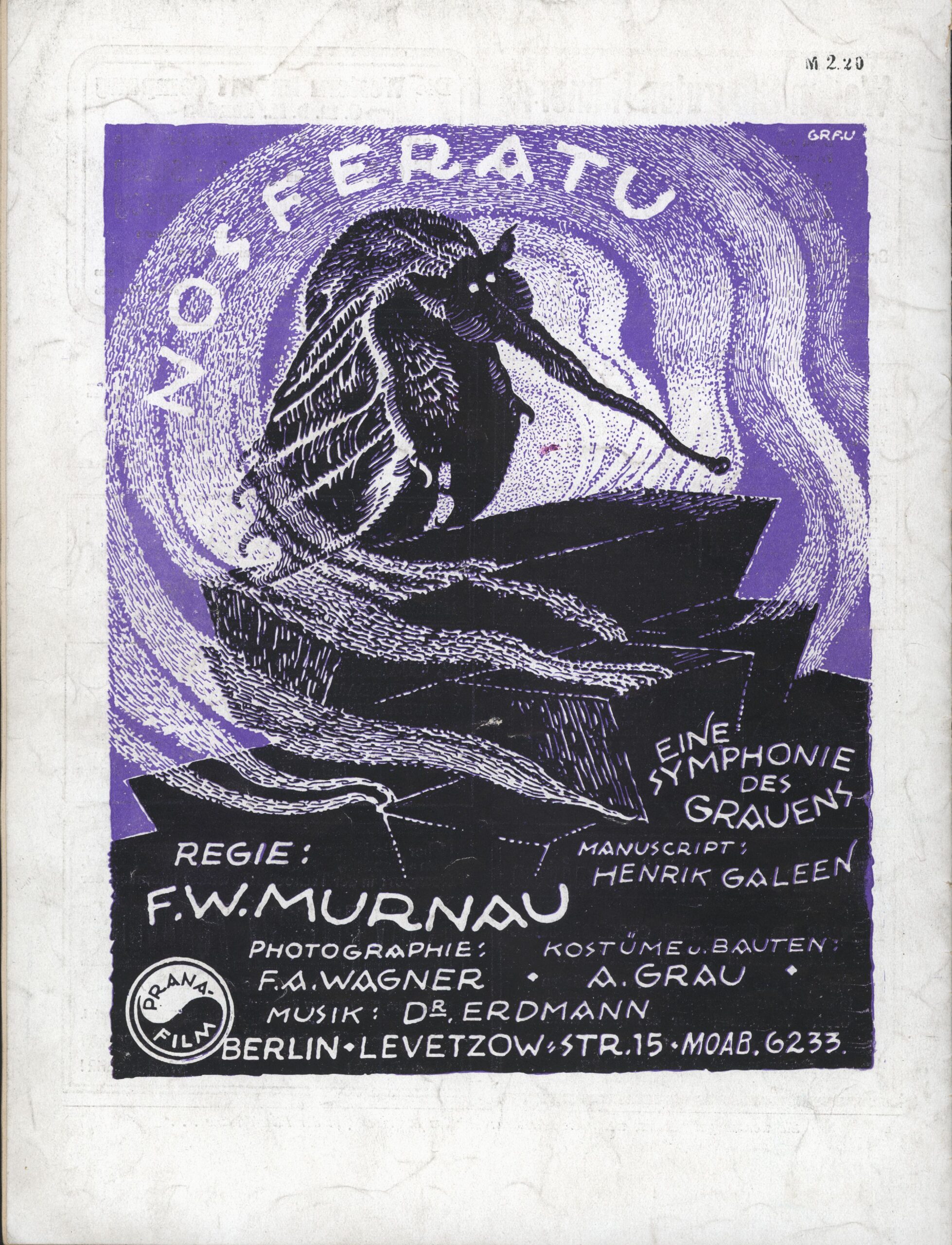
Albin Grau (1884-1971), advertisement for NOSFERATU, in: Film-Tribüne, No. 34/35,
1921Cantonal Library of Appenzell Ausserrhoden (Switzerland)
For those who have not yet seen the film: The film itself will be shown within the exhibition in a very special ambience! Until the completion of the renovation work in the Pergamon Museum, parts of the Egyptian collection were moved to the Scharf Gerstenberg Gallery. As a result, the film “Nosferatu” will be shown in a surreal surrounding amidst the columns of the ancient Egyptian temple of Sahure. The film screening will take place on all exhibition days at 11:30 am, 2 pm and 4 pm.
When? 16.12.22 – 23.04.23
Where? Sammlung Scharf-Gerstenberg, Schloßstraße 70, 14059 Berlin
Tickets? 12 Euro/ Reduced 6 Euro
Opening Hours? Tue-Fri 10 am – 6 pm / Sat+Sun 11 am – 6 pm


